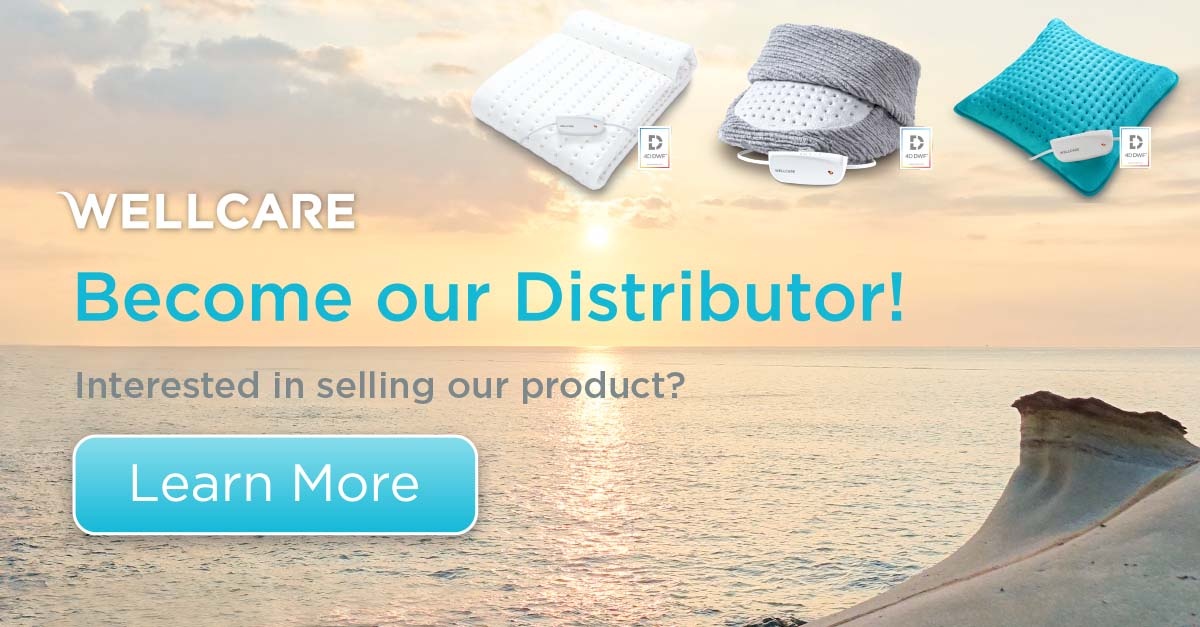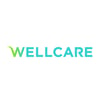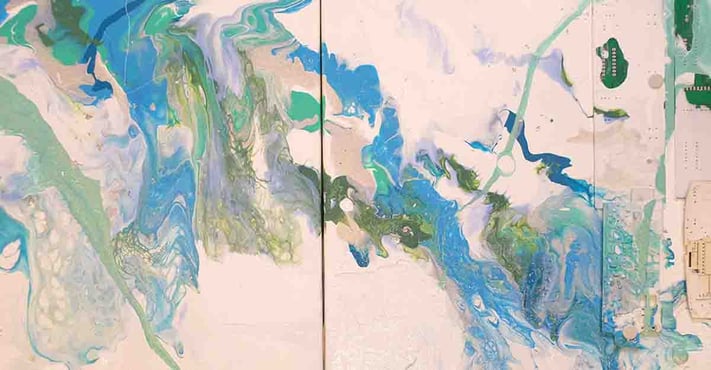
Without a second thought, what do you see when you look at this fluid art painting?
What’s the first thing you see when you look at this fluid art painting?
Take a deep breath, and don’t overthink it. Use intuition to describe what you see. What comes to mind? Every person will probably respond differently.
Can you imagine what the world will look like in the future?
You get out of bed in the morning, and your smart assistant chooses your outfit based on the people you’re meeting today and what work you have to do. It then prepares food that is suitable for your current body condition. You walk out the front door, and your autonomous vehicle is already waiting for you. The city you live in uses artificial intelligence to automatically change traffic signals depending on traffic flow and accidents to optimize commute times.
You arrive at the office, and your robot secretary informs you that the amount of renewable energy produced today is enough for all needs or can be sold to everyone in the world. It’s time to get to work, and you use “awareness” to link your brain and computer. You don’t need to tap away on a keyboard. Your robot secretary can transcribe your speech to text and send this information to designated recipients. It’s now lunchtime. What do you feel like eating? Today’s choices include artificial meat and seafood customized for you using DNA biological programming.
You go home after work, and look in the mirror. You notice that a few more wrinkles have appeared, so you take an anti-aging pill that is sold over the counter like flu medicine. You call your mother while eating dinner. She tells you how great her smart assistant is, because it chats with her every day and takes care of all the small and big issues in her life.
It’s time for a holiday, and you and your family take the capsule-shaped Hyperloop through a vacuum tube to quickly and safely reach your vacation destination.
The book “2030 State of the Future” predicted many of the aforementioned scenarios and encouraged readers to imagine what the future would be like. The experimental space created by designer Ramy Fischler and his team for the 2020 Maison&Objet (M&O) trade fair in France had a similar perspective.
It didn’t provide concrete answers to questions about the world of tomorrow. Instead, attendees were encouraged to reflect on questions such as, “What will I be eating in the future?” Will it be food pills that come in various flavors, steaks made from insects, or genetically modified soup inside bottles?
“Whom will I be working with in the future?” was another question. The possibilities include non-human living beings and decision-making robots. Perhaps you’ve already given these issues some thought.
Prior to the M&O fair in January 2020, the Wellcare team visited the Musée de l’Homme, which is located directly opposite the Eiffel Tower. They saw numerous items related to humanity displayed in the large exhibition spaces, learning about relationships that don’t differentiate between ethnicity, country, or nature. They examined the food culture of mankind from the prehistoric to the present time; the effects of globalization and industrialization; and the connection between “consuming nature” issues such as environment, food, and food production and methods.
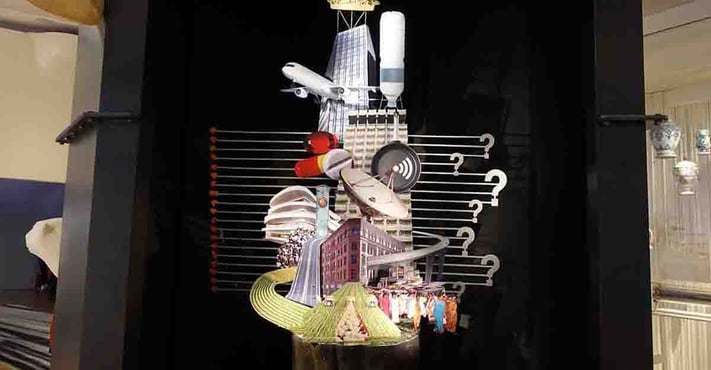
Musée de l’Homme, an anthropology museum in Paris.
How can food be sustainably managed?
Food is at the crossroads that connects humans and nature. Three million years ago, primitive people used wood to light fires, drank river water, cooked the food they hunted, and gathered herbs. Once they used up the resources of an area, they moved on to the next one. They knew how to appropriately take from nature.
Human beings have extensively used the earth’s resources to feed themselves since the invention of agriculture and animal husbandry about 10,000 years ago. Different types of nutritional intake, changes to flora and fauna types, and different diets have all impacted the food system and biodiversity.
Professor Samuel Rebulard from the Musée de l’Homme mentioned that diets have gradually narrowed with the industrialization and globalization of food in the 20th century. Three plants – rice, wheat, and maize – provide 60 percent of the world’s food energy intake. According to a Food and Agriculture Organization report, humans eat only 6,000 of the 30,000 edible plant species. This shows there is a lack of diversity in the human diet.
United Nations statistics show that over 90 percent of crop varieties have disappeared in the past century and half of livestock breeds no longer exist. Moreover, all of the world’s 17 main fishing grounds are being fished at or above their sustainable limits. It’s possible that you can no longer eat what your grandparents ate. A lack of diversity in diets will create health issues such as malnutrition.
Our impact on nature has nearly reached the point of no return due to the ascending global population, changes to how land is used, climate change, and other issues. Many scientists are looking for alternatives such as artificial meat or artificial seafood to avert a food crisis. In 2013, Dutch professor Mark Post created cultured hamburger patties using cow cells. Those who tried it out said it wasn’t especially tasty and there was room for improvement. However, one merit of artificial meat is that it requires 99 percent less land, 98 percent less water, and 56 percent less energy to produce while emitting 66 percent less fossil fuel emissions. It also upholds animal rights.
The Musée de l’Homme predicted that kelp that can be mass-produced or insects that are already widely consumed in Africa may show up on future dinner tables in order to sustain the huge world population. The latest data from the UN in 2019 indicate that the world population will rise to 10.9 billion by 2100.
Would you be willing to try the aforementioned future foods? Apart from flavor and aroma, it might be the same as the meat you eat now, although it might lack the softness or firmness of real meat. These future foods may become real meals, but will they satisfy taste buds? Or will you just naturally accept them?
How can the environment be sustainably managed?
Sunshine, air, water, and land have produced everything that we are familiar with. Humans and nature can only mutually benefit from each other and resources can only achieve sustainable development when the cycles of nature are followed.
The UN’s World Water Development Report indicated that there are presently 500 million people that consume twice the amount of water that nature can sustain. Moreover, the groundwater level on every continent is descending.
According to “2030 State of the Future,” developed countries account for 50 to 80 percent of the water used in industry. In developing countries, the per capita water usage is increasing due to rising industrial and agricultural demand. If no actions are taken, the world will face water scarcity in the future.
American space agency NASA has reported that the global temperature has risen by 1 degree Celsius since the Industrial Revolution. It surmised that if the current trend continues, the temperature might rise by 1.5 degrees Celsius by 2040. The earth’s self-purification ability simply cannot keep up with the accelerated rate at which industrialization and urbanization are presently occurring. This has destructive effects on the atmosphere, oceans, and land. In the fluid art pouring painting, did you notice any of the hidden details?
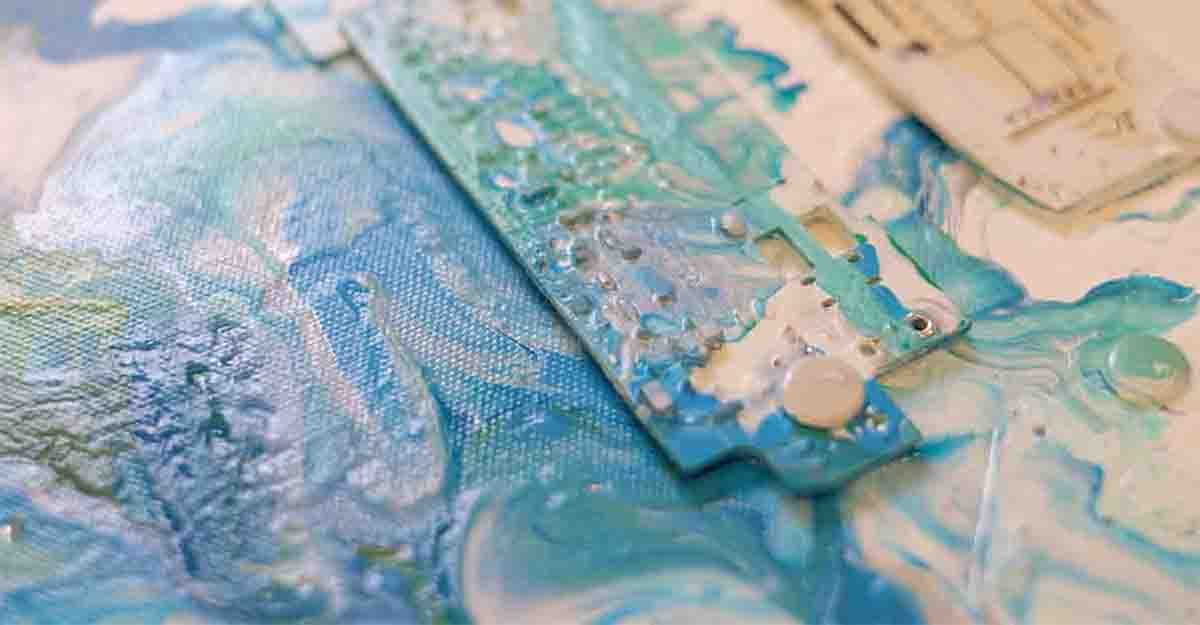
ScienceNews reported that fossil fuels flooded the atmosphere with 36.8 billion metric tons of carbon dioxide in 2019, up from 36.57 billion tons in 2018. Countries around the world have begun promoting renewable energy sources. For example, the European Commission has adopted a low-carbon economic strategy plan to reduce emissions by 80 to 95 percent by 2050. It declared 2018 as “Year of the Air” and announced the 2030 climate and energy framework that has an objective of preventing 58,000 premature deaths or illnesses resulting from air pollution.
The earth’s resources are not endless, and the road of unlimited consumption is no longer feasible. In recent years, nature has issued numerous warnings. The so-called “good life” can no longer be based on the idea of “endless resources.” Ideas and behaviors need to change.
Sustainable development results from the harmonious coexistence of nature and humans
Life is not merely about living, but also about cultural accumulation. The development of civilization has been driven by humans continuously changing methods of production. Different geographical circumstances and climates create different humans and species. The conditions, circumstances, and characteristics at different times are all for the purpose of nourishing a better future.
We are the result of the accumulation of the past, and we are deciding on what the future looks like at this very moment.
The Wellcare team was inspired by Eastern philosophies and created a fluid art pouring painting with all the elements of the universe: earth, water, fire, and wind. We incorporated discarded PCBs (Printed Circuit Boards) from our own production lines and used natural and colorful pigments. We reflected on and explored our awareness of the relationship between people, the environment, ecology, and nature.
There is a row of consumables in the upper right of this painting that symbolize the modern industrialized society. White paint was poured on to serve as the world’s water resources. The water on the lower right has a crackle effect created through fire, and symbolizes the melting of icebergs.
Blue-, green-, and purple-colored paints slowly stack, flow, and merge. The painting was created by letting natural thoughts deliberately and unconsciously emerge. Use your imagination, and study it from different angles. What animals do you see?
Colleagues who were not part of the creative process were invited to participate in a blind test. They reported seeing eagles, peacocks, fish, lions, and bears. Some of these discoveries were not part of the creative plan, and some answers surprised even the creators.
This is a work with no standard answers. Through this painting, Wellcare explored the human relationship with nature. The birds flying in the air and the fish swimming in the sea appear to be separated by a great distance. However, industrialization has polluted the air and the water, affecting them all. What do you think they would say to humans?
The pace of global industrialization is increasing, resulting in the gradual reduction of forests, species, and water resources. Wellcare used this painting to reflect on its own actions. It also hopes this visualization and reflection will spark you to examine whether your life is in harmony with nature.
The actions of humans will determine the future. The theme of the “Share Space” at the 2020 M&O’s “What’s New” exhibit was “Mother Earth.” The items on display revolved around earth elements, such as plants, minerals, soil, fire, and water, and were all made from natural and local materials to allow people to perceive the harmonious coexistence between nature and humans.
Would you be willing to stop buying new clothes for half a year for the environment? British fashion designer Vivienne Westwood believes people should only buy clothes when it’s necessary and it’s best to opt for quality clothes to cut down on unnecessary waste. Responsible consumption that shows concern for the environment should be practiced.
Wellcare believes the harmonious coexistence of humans, the environment, and nature can build a better future. This is not merely respect, inclusion, and effort, but also a choice.
Wellcare does not pursue fully automated maximum production efficiency when making products. Many products go through a minimum of 250 processes and tests before they are completed, from materials, parts, and semi-finished products to finished products. Every single step is carefully and repeatedly checked.
We stringently select source materials and care about ecology.
We don’t pursue fully automated maximum production efficiency, and we have retained manual tasks.
We simplify complicated manufacturing procedures, and follow prescribed orders.
We save our best work for those details that go unnoticed.
From 1995 until now, Wellcare has made a name for itself in the healthcare industry. We prioritize eco-friendly materials and pay careful attention to details in our pursuit of quality. Although this means that development times are longer and costs are higher, Wellcare believes that the harmonious coexistence between humans and nature can create unbounded and true happiness and energy, and all this effort is absolutely worth it.
Every product is made through an exchange of natural resources. We need to cherish our natural resources and allow them to achieve their proper value. Do your part for the environment by opting for eco-friendly products, respecting life, and respecting nature.
Cherish the harmonious coexistence that we have with the earth. Even small changes have the potential to become big changes that affect the world.


.png?width=512&name=united-kingdom%20(1).png)
